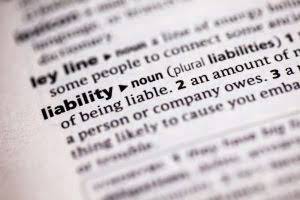
Incremental analysis is an essential tool for decision-making, particularly when comparing business alternatives and determining their true cost difference. Let us explore this concept in detail through an example of a company facing a special order situation. It is important to understand and assess both the positive and negative effects of the process of incremental analysis in accounting and them implement it. This will ensure that the idea is used in the best way possible and applied in appropriate areas in order to achieve best results through cost control and optimum use of resources. The incremental analysis makes a comparison of this cost and return earned for each and analyse whether the incremental cost is more or less than the incremental revenue. If the latter is more than the former, the situation is favourable, and else it is not.
Example 1: Company A’s Expansion Project
By deciding to process further the net income is increased by 7,200 and the decision should be taken to continue processing. The unit product cost is 6.00 comprising direct material and labor costs of 3.50, variable overhead costs of 0.90 and fixed overhead costs of 1.60. The concept of sunk costs describes a cost that’s already been incurred and does not impact any decision made by management or between alternatives.
Incremental Revenue vs. Incremental Cost

Incremental development approaches are especially useful in complex, high-uncertainty projects such as those involving new technologies, evolving requirements, or significant stakeholder interaction. It supports a more adaptive planning process, enabling incremental cost approach engineers to respond to change and reduce risks over time. Incremental development is a fundamental approach in systems engineering where a system evolves through repeated cycles (iterations) of planning, designing, implementing, and evaluating. For instance, evaluating expanding monthly production from 10,000 units to 15,000 units means the incremental change is 5,000 units. Dual pricing refers to the practice of quoting one price for the domestic market and a second price for exports. Various issues must be taken into consideration in establishing a dual pricing policy.

Spectrum of LRIC
- For example, if you normally produce 10,000 units of a product per month, this base monthly volume is 10,000 units.
- Incremental analysis can be applied to various business decisions such as accepting special orders, allocating limited resources, deciding whether to produce or buy goods, or scrapping projects.
- Incremental analysis enables companies to effectively evaluate each decision based on its own merits and to understand the true impact of a given choice on their bottom line.
- Incremental cost determines the change in costs if a manufacturer decides to expand production.
- Many businesses find it helpful to use production management software to track these metrics automatically.
Incremental analysis does not factor in sunk costs, which are expenses already paid regardless of the decision made. Instead, it focuses on variable costs, the costs that change with a business decision, and opportunity costs—the benefits forgone by choosing one alternative over another. Incremental analysis allows companies to weigh the consequences of various business alternatives based on their true cost implications. By focusing on relevant costs, which are those directly affected by a decision, organizations can make informed decisions that increase profitability and improve overall financial performance. In the following sections, we will explore the intricacies of incremental analysis further, including its applications, limitations, and benefits.
Incremental analysis is an accounting tool used to help a business make short-term decisions. The process looks at the incremental changes in costs and revenues arising from the alternative options available, and selects the one which gives either the lowest cost or the highest net income. For a cost to be considered a “relevant cost,” it must be incremental, result in a change in cash flow, and be likely to change in the future. The concept does not apply to financial accounting but can be applied to management accounting. To fully comprehend the concept of incremental analysis, one has to understand its underlying concepts.
Unsurprisingly, the most important question to pose when calculating a LRIC is ‘What is the increment? ’ An increment could be a single unit of QuickBooks Accountant output, i.e. a marginal cost, and is likely to be very small in a network industry with high fixed costs. More commonly, however, it is a particular product; when the increment is large, such as a product group, it is also possible to calculate the average incremental cost for the product to produce a ‘LRAIC’—i.e. This is likely to be larger than a ‘pure LRIC’ as it will include costs that are shared across the related products, meaning that more costs would be avoided if the large increment is removed. This brings us onto cost–volume relationships (CVRs), which relate avoided costs to reductions in volume. Incremental costing is closely related to marginal costing, or the cost of producing an additional unit of output.

Incremental Costs Vs Margin Costs
Alternatively, once incremental costs exceed incremental revenue for a unit, the company takes a loss for each item produced. Therefore, knowing the incremental cost of additional units of production gross vs net and comparing it with the selling price of these goods assists in meeting profit goals. In order to effectively utilize incremental analysis, it’s essential to distinguish between relevant and non-relevant costs.
The additional business opportunities are received on account of lower than the normal selling price of the company’s product. As the orders are received in bulk, so the purchaser would claim for a lower rate. Incremental cost of capital is related to composite cost of capital, which is a company’s cost to borrow money given the proportional amounts of each type of debt and equity a company has taken on. The WACC calculation is frequently used to determine the cost of capital, where it weights the cost of debt and equity according to the company’s capital structure.
- While the comparative income statements provide the correct answer the process involved reviewing all costs and revenues irrespective of whether they were relevant or not.
- When using an incremental approach, not every iteration results in a tangible increment (i.e., a deliverable or prototype).
- By focusing on relevant costs and opportunity costs, businesses can make better decisions that lead to more profitable outcomes while minimizing waste and resource misallocation.
- It is usually made up of variable costs, which change in line with the volume of production.
- Incremental cost of capital is the weighted-average cost of new debt and equity issuances during a financial reporting period.
- To fully grasp incremental analysis, it is essential to recognize the distinction between relevant costs and non-relevant costs.
Founded in 2002, our company has been a trusted resource for readers seeking informative and engaging content. We follow a strict editorial policy, ensuring that our content is authored by highly qualified professionals and edited by subject matter experts. This guarantees that everything we publish is objective, accurate, and trustworthy. 4 These alternatives will be the subject of a second article, as the prime interest in this article is to consider how to add incrementality into ABC systems rather than to choose between alternative FAC principles. 2 See, for example, Ofcom (2019), ‘Review of regulatory financial reporting for Royal Mail Cost allocation and transfer pricing’.





